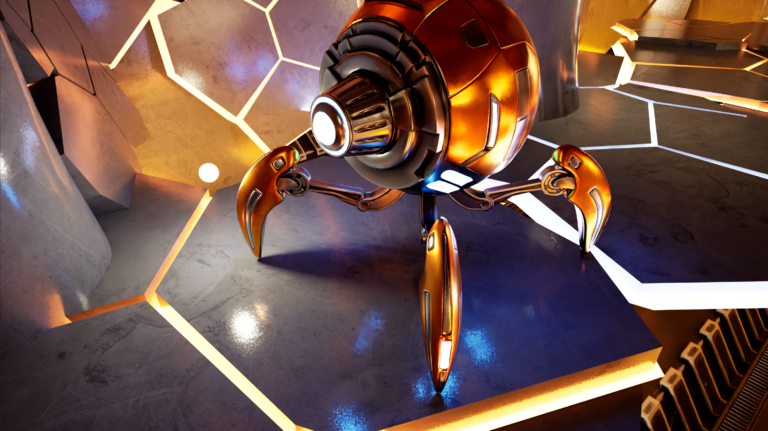A superbloom of creative app updates, included in the May Studio Driver, is ready for download today.
Category: Misc
AI heralds a new era of innovation for every business in every industry, NVIDIA founder and CEO Jensen Huang said Monday during an appearance at Dell Technologies World. “We now have the ability to manufacture intelligence,” Huang said during an on-stage conversation with Dell CEO Michael Dell. “The last Industrial Revolution was the manufacturing of
Read Article
 At Google I/O 2024, Google announced Firebase Genkit, a new open-source framework for developers to add generative AI to web and mobile applications using…
At Google I/O 2024, Google announced Firebase Genkit, a new open-source framework for developers to add generative AI to web and mobile applications using…
At Google I/O 2024, Google announced Firebase Genkit, a new open-source framework for developers to add generative AI to web and mobile applications using models like Google Gemini, Google Gemma. With Firebase Genkit, you can build apps that integrate intelligent agents, automate customer support, use semantic search, and convert unstructured data into insights. Genkit also includes a developer UI…
Explainer: What is Regression?
 Classification and regression are two groups of supervised machine-learning algorithm problems. Supervised machine learning uses algorithms to train a model to…
Classification and regression are two groups of supervised machine-learning algorithm problems. Supervised machine learning uses algorithms to train a model to…
Classification and regression are two groups of supervised machine-learning algorithm problems. Supervised machine learning uses algorithms to train a model to find patterns in a dataset with labels and features. Regression estimates the relationship between a target outcome label and one or more feature variables to predict a continuous numeric value.
 Ever spotted someone in a photo wearing a cool shirt or some unique apparel and wondered where they got it? How much did it cost? Maybe you’ve even thought…
Ever spotted someone in a photo wearing a cool shirt or some unique apparel and wondered where they got it? How much did it cost? Maybe you’ve even thought…
Ever spotted someone in a photo wearing a cool shirt or some unique apparel and wondered where they got it? How much did it cost? Maybe you’ve even thought about buying one for yourself. This challenge inspired Snap’s ML engineering team to introduce Screenshop, a service within Snapchat’s app that uses AI to locate and recommend fashion items online that match the style seen in an image.
 In Part 1, we discussed how to train a monolingual tokenizer and merge it with a pretrained LLM’s tokenizer to form a multilingual tokenizer. In this post, we…
In Part 1, we discussed how to train a monolingual tokenizer and merge it with a pretrained LLM’s tokenizer to form a multilingual tokenizer. In this post, we…
In Part 1, we discussed how to train a monolingual tokenizer and merge it with a pretrained LLM’s tokenizer to form a multilingual tokenizer. In this post, we show you how to integrate the customized tokenizer into the pretrained LLM as well as how to start a continual pretraining task in NVIDIA NeMo. Please import the following libraries before starting: After…
 In today’s globalized world, the ability of AI systems to understand and communicate in diverse languages is increasingly crucial. Large language models (LLMs)…
In today’s globalized world, the ability of AI systems to understand and communicate in diverse languages is increasingly crucial. Large language models (LLMs)…
In today’s globalized world, the ability of AI systems to understand and communicate in diverse languages is increasingly crucial. Large language models (LLMs) have revolutionized the field of natural language processing, enabling AI to generate human-like text, answer questions, and perform various language tasks. However, most mainstream LLMs are trained on data corpora that primarily consist of…
 Integrate RTX into your own game and understand what ReSTIR means for the future of real-time lighting in this May 21 webinar.
Integrate RTX into your own game and understand what ReSTIR means for the future of real-time lighting in this May 21 webinar.
Integrate RTX into your own game and understand what ReSTIR means for the future of real-time lighting in this May 21 webinar.
Whether looking for new adventures, epic storylines or games to play with a friend, GeForce NOW members are covered. Start off with the much-anticipated sequel to the Men of War franchise or cozy up with some adorable pals in Palworld, both part of five games GeForce NOW is bringing to the cloud this week. No
Read Article
Senior executives from NVIDIA, Siemens and Teradyne Robotics gathered this week in Odense, Denmark, to mark the launch of Teradyne’s new headquarters and discuss the massive advances coming to the robotics industry. One of Denmark’s oldest cities and known as the city of robotics, Odense is home to over 160 robotics companies with 3,700 employees
Read Article
